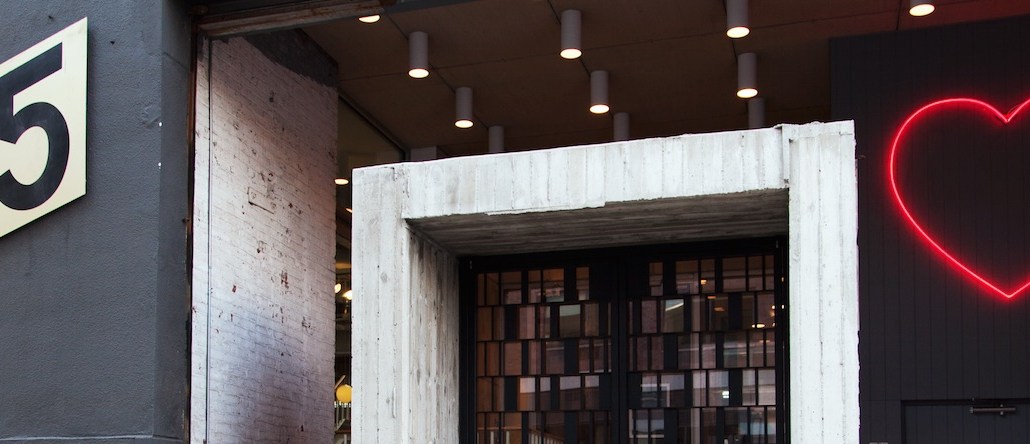Save 50% on a 3-month Digiday+ membership. Ends Dec 12.

At Mother, nothing ever stays the same.
The independent agency network, which has offices in New York, London and Buenos Aires, has an egalitarian approach that asks employees to switch desks every three months. “It’s based on a very complex algorithm,” jokes co-founder Paul Malmstrom. In fact, the seating is random and based on a simple idea: the more you know about people, the better you can work with them. Which is why you might find yourself working next to someone you don’t know at all and over the next three months, get to know them as intimately as only people who sit in close proximity 40-plus hours a week can.
Three stories tall and far away from the ad nexus of Madison Avenue, on Eleventh Avenue in Manhattan, Mother’s New York headquarters is quirky and fun. There’s an art gallery called “The Peanut Gallery” and a big stuffed bear that doubles as security. And everyone works together in large spaces that houses creatives, accounts, strategists and “Mothers,” the agency’s internal name for the team leads.
“As we grow, we haven’t changed our approach or our vibe,” said Malmstrom. “We’re not afraid of growth, but we don’t want to move that fast.” The agency now has 150 employees in New York and 350 worldwide.

Mother has long stood out in the agency industry for its egalitarian approach that eschews long credit lists in favor of collaboration. (Credit lists often just list one thing: “Mother.”)
An innovative, digital and design-focused ideology shows in some of the work it has done — last year, for CB2, for example, the agency turned an Airbnb apartment into a “live CB2 catalog” and designed an apartment in real time based on Pinterest trends.
That collaborative spirit is evident in Malmstrom’s latest project, “Mothermade,” an online boutique of quirky objects created by Mother employees. There are blankets that cost $400 and read phrases like “Babies are the worst,” and “secondbesturl.com” for sale that’s only $10. Mother supplies a little bit of seed money to get products off the ground, and the creators keep the profits. Malmstrom, who recently purchased a $260 “New Jersey Sucks” quilt, said that people who are makers by nature but do not necessarily have that as part of their job can exercise their creative muscles. “This isn’t an agency IP project; it’s an exercise so people can learn to package things and sell things,” he said.
Mother’s executive team figured out how the agency space would look. Creatives work in open spaces surrounded by past and ongoing work.

Large panels of current work cover the entire length of the first floor.

The kitchen sits in the middle of the first floor, making it a communal meeting spot for everyone in the office. Mother serves up meals and snacks throughout the day. There’s a chef, and Stella Artois (a client) beer taps are at the ready.

Everyone in the office has a portrait of their mother on this wall as well as on their business cards.

There are comfortable couches throughout the office.

Since everyone moves seats all the time, employees get their own lockers to stash belongings.

Employees can escape to the roof anytime the weather is good. Mother NY brings in a new artist to paint the walls every season.



All photos by Hannah Yi
More in Marketing

‘We just did the math’: The new baseline for ad tech transparency
Ad execs said the industry is shifting toward a renewed transparency push driven as much by day-to-day operational pressure as by principle.

In Graphic Detail: Here’s what the creator economy is expected to look like in 2026
Digiday has charted its expected revenue, key platforms for creator content as well as what types of creators brands want to work with.

Ulta, Best Buy and Adidas dominate AI holiday shopping mentions
The brands that are seeing the biggest boost from this shift in consumer behavior are some of the biggest retailers.





